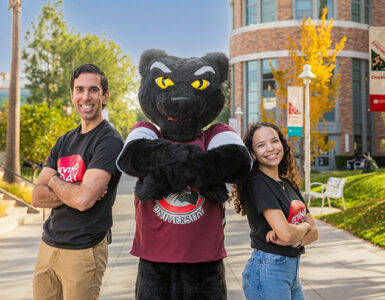You really can teach an old dog new tricks. Although at Chapman, the dogs are brand new, and they aren’t really dogs.

Meet Spot, one of two latest additions to the Fowler School of Engineering’s collection of cutting-edge technology tools. The robots, which are modeled on the canine form and branded Spot by technology firm Boston Dynamics, were acquired this past summer by Chapman to be used for teaching and as a research tool for exploring potential applications for machine learning.
Leading this pack is Erik Linstead ’01, associate professor of electrical engineering and computer science.
“When we were looking at these robots, originally we were thinking they would be a great teaching tool,” explains Linstead. “But obviously, with an investment like this and this kind of capability, it takes half a second before you start thinking of research angles.”
Linstead’s research centers on machine learning, the field within computational science that focuses on the automatic improvement of algorithms through data and experience. Machine learning can be found in domains that span medical informatics, software engineering, remote sensing and advertising.
Specifically, Linstead is interested in pursuing the dogs’ ability to collect data through sophisticated imaging equipment — the type of equipment used to create high-fidelity images of crop fields or urban development taken from space.
“One thing we are keen to do is see if fusion algorithms — also known as deep-learning algorithms — can be used on a data acquisition platform like Spot to get high fidelity models of environments and then provide insight into how humans interact with those environments,” he says. “Chapman’s own Swenson Hall, for example, was built with labs that flow from ideation through prototyping and finally to manufacturing, so Spot can tell us if people are really moving through the building in the way we had envisioned.”
For now, Spot’s prime directive is to serve as a learning tool for students in Linstead’s fall 2021 course, “Artificial Intelligence for Robots.”
“If the students don’t get their hands on them, what’s the point?” Linstead asked. “With Spot, for both student learning and potential research, the sky’s the limit.”




